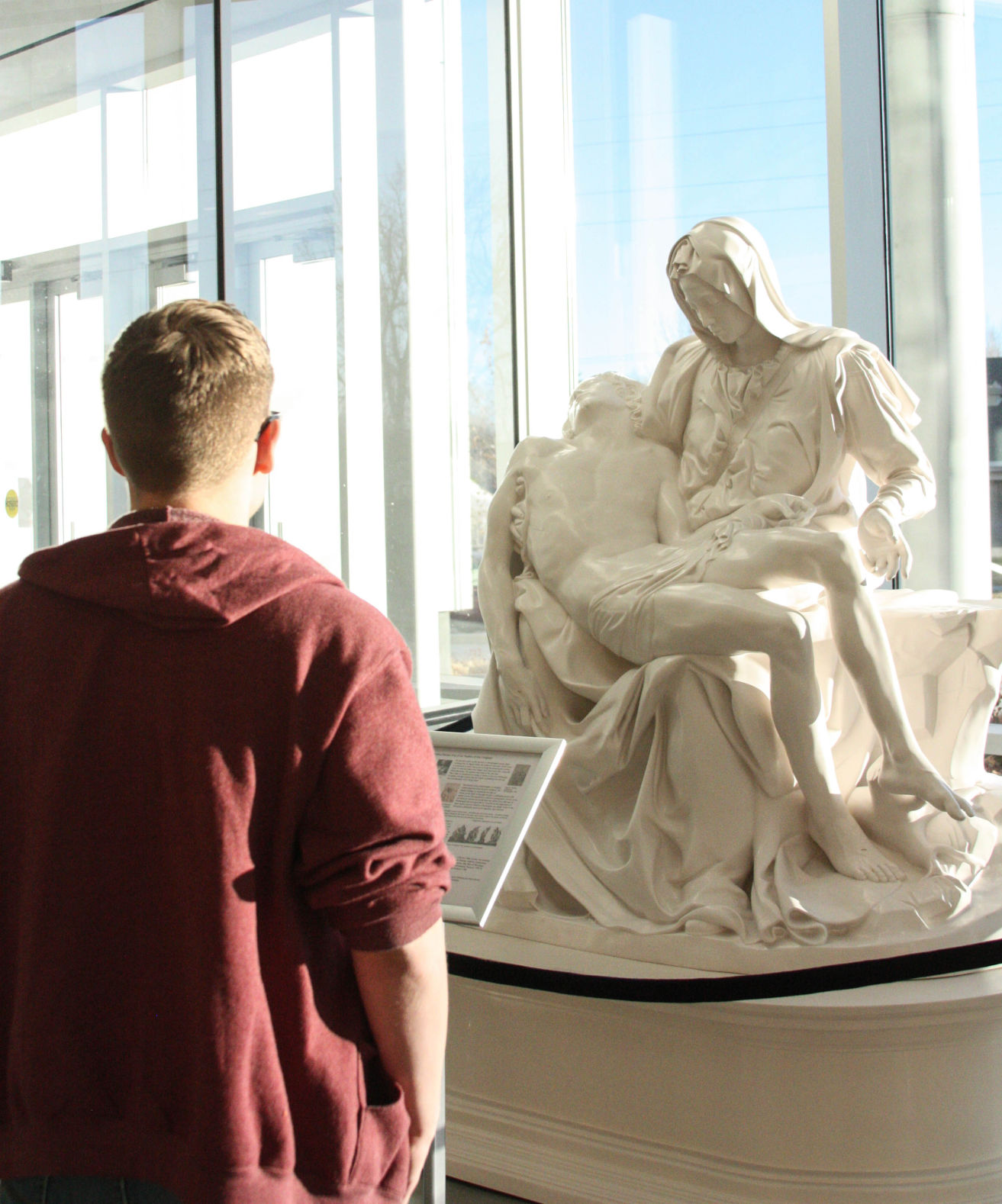A rare copy of Michelangelo’s sculpture, the Pietà, is on display at USU Eastern’s Central Instruction Building. This cast marble replica is only one of 100 authorized copies in the world. This dramatic statue, owned by the Vatican, depicts Mary holding her son, Jesus Christ, after his crucifixion.
Considered by many to be one of Michelangelo’s best work, he carved the Pietà out of Carrara marble when he was only 23. It took two years to complete, using only the rudimentary tools available in the late 1400s.
The statue is in the lobby area and visitors can walk around all sides to view it. There is no charge, and viewers can spend as long as they want admiring the piece. To see the original Pietà in Rome, tourists must purchase a ticket and look at it behind bullet-proof glass in St. Peter’s Basilica.
“It is an amazing piece of artwork. Having a life-size replica at the college gives an opportunity for extended exposure to a significant piece of art. We are grateful to the generous businesspeople who brought it here,” said Chancellor Joe Peterson.
Bringing the valuable statue to rural Utah was a difficult task; it required local businessmen, Mark Morley and Jared Haddock, to unite for the cause. The statue’s beauty and meaning created a particular draw for them.
“For me it’s a spiritual experience. For some people they might appreciate the artwork of a master and that is great. For me, I think about what that moment in time represents, what Michelangelo was trying to capture… Mary knew that her son had to give the ultimate sacrifice. To be there and witness it, she must have felt ultimate relief and complete sadness. To be able to capture that in marble is incredible,” said Morley.
Haddock explained how his closer look at the Pietà influenced him. “I love the expression on Mary’s face as she holds her son. The love that she shows is very moving. Michelangelo had another one that was completed half way. Christ was holding Mary.
Wow, Michelangelo understood their relationship. Somehow Mary is able to understand why her son had to die. How he had to suffer for the world. It was also an ultimate sacrifice for her. Her face seems to capture that.”
Michelangelo’s masterpiece, Pietà, now on display at USUE

A student gazes at the sculpture, which depicts Mary holding the body of her son, Jesus, after he died on the cross. Michelangelo portrayed her expression as lovingly sad but calm, with her gaze on her son’s navel, a poignant reminder of their connection. Renee Banasky
